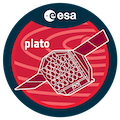Speaker
Description
It is the optimal time to characterize the Earth-like exoplanets to detect biosignatures beyond the Earth because such exoplanets will be the prime targets of big-budget missions like JWST, HabEx, LUVOIR, ELT, HWO, etc. We modelled the phase curves of albedo and disk-integrated polarization by using appropriate scattering phase matrices and integrating the local Stokes vectors over the illuminated part of the disks along our line of sight. For this, we solved the 3D vector Radiative-Transfer equations numerically. We also provide models for the Transmission and Reflection spectra for present and prebiotic(3.9 Ga) Earth-like exoplanets orbiting within the Habitable-Zone of stars of different spectral types. Potential biosignatures molecules acting as greenhouse agents are incorporated in our models. Various combinations of solid and liquid materials such as ocean, coast, land consisting of trees, grass, sand or rocks determine the surface albedo of the planet. Geometric albedo for nine potentially habitable planets, including Proxima Centauri b, TRAPPIST-1d,e and Teegarden’s Star-b, are also included. We employ the opacity data derived by using the open-source package Exo-Transmit and adopt different atmospheric Temperature-Pressure profiles depending on the properties of the terrestrial exoplanets. We present the effects of globally averaged surface albedos (consisting of ocean, coast, land etc.) on the reflection spectra and phase curves as the surface albedo significantly dictate these observational quantities. We also note the effects of clouds and inclination angle on the observable parameters. Synergic observations of the spectra and phase curves will certainly be useful in extracting more information and reducing the degeneracy among the estimated parameters of terrestrial exoplanets. Thus, our models will play a pivotal role in driving observations for the search of habitable worlds.

